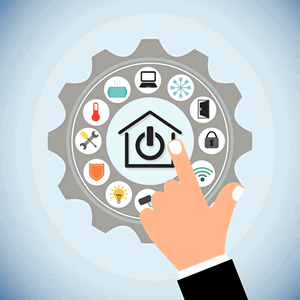Tech at Work: Cisco’s Digital Ceiling
Cisco’s Digital Ceiling, which aims to bring together the many networks within a building, wouldn’t work without connector and cable provider partners.
 The Digital Ceiling, launched earlier this year by Cisco, marries the many networks within a building, including lighting, heating, cooling, and video, to one network platform.
The Digital Ceiling, launched earlier this year by Cisco, marries the many networks within a building, including lighting, heating, cooling, and video, to one network platform.
Because both connection and cabling solutions play such an important role in the networks, Cisco has partnered with several solution providers, including Siemon and Molex, both of which make connector and cable technology that can be used in Digital Ceiling installations.
The Digital Ceiling is aimed at connecting previously disparate building systems and services on a single internet protocol network. By bringing together the systems, as well as sensors and actuators, on a single platform, the solution improves building efficiency and sustainability and enables building owners to manage and control them more effectively, according to Cisco. Building occupants can use the platform to control the lighting, heating, and cooling systems where they reside, whether it’s a cubicle or an apartment within the structure.
“Consider a workplace scenario where daylight harvesting, automatic dimming controls, and presence-based lighting save energy and reduce costs,” said a Cisco representative in a statement. “Picture a retail environment where Digital Ceiling analytics of traffic patterns are used to improve store layouts, merchandise placement, staff allocations, and security.”
In a retail environment, improvements in lighting and signage can result in an increase in sales revenue on the order of hundreds of dollars per square foot, according to Cisco.
The solution also offers energy savings to building owners. The Digital Ceiling can adapt lighting to actual user needs, which could result in potential energy savings of $1.08 per square foot annually in commercial spaces.
A key part of the Digital Ceiling includes systems and devices that are powered by network switches using Power-over-Ethernet (PoE), including PoE-powered LED lights with sensors that can help lower energy costs by up to 85%. (Power-over-Ethernet lets network cables carry electrical power.)
Cisco named Siemon a Digital Ceiling partner for its ConvergeIT Cabling Solution, which supports Power-over-Ethernet-enabled systems. The structured cabling system brings data, voice, video, and low-voltage building systems together on a single unified physical infrastructure, which provides cost savings and sustainability over the life of the facility, says Bob Allan, Siemon’s global business development manager for intelligent buildings and strategic alliances. “Siemon has long been an expert in and advocate for integrated systems over a single unified cabling solution that combines power to and control of building devices and lighting to cut costs, save energy, and improve overall building control, management, and security.”
Molex, another Digital Ceiling partner, offers a portfolio of cables, sensors, PoE gateways, and lighting fixture solutions applicable for use within a Digital Ceiling implementation. These include the Molex Transcend Network Connected LED Lighting System, which uses either IP structured cabling or wireless connectivity.
“A network-connected LED lighting system offers far more than new fixtures,” says Mike Picini, vice president of Molex’s solid-state lighting business unit. “Integrated network solutions such as the Transcend system are complete LED lighting management systems that can be monitored and controlled for different building environments via sensor data.”
As new LED solutions are developed, architects, lighting designers, building developers, and owners will have access to a technology that greatly reduces complexity and is less costly to install and deploy than traditional AC LED products, Picini predicts.
Also, connected LED systems offer the same or greater energy reductions than do AC LED products, he says.
Meanwhile, Siemon recommends a zone cabling design for the Digital Ceiling and offers guidance and solutions to enable this approach, according to Allan. Zone cabling consists of horizontal cables run from Cisco UPOE switches in the telecommunications rooms to intermediate connection points housed in one of Siemon’s zone unit enclosures located in the ceiling space. From the zone unit enclosures, LED lights and devices are connected via shorter, easier-to-manage connections.
“This supports a more rapid reorganization of devices with less disruption, which is especially important considering the sheer number of LED lights and IP-based devices that can go into a facility’s ceiling,” Allan says.
With zone cabling, changes are limited to the shorter cabling segment between the device and the zone unit enclosure rather than the entire length of the horizontal cabling from the switch in the telecommunications room, he adds.
The cabling method also simplifies the deployment of new devices in a Digital Ceiling application, requiring only a short connection to the zone unit enclosure.
Author Jean Thilmany is a freelance writer and contributor to Connector+Cable Assembly Supplier.



